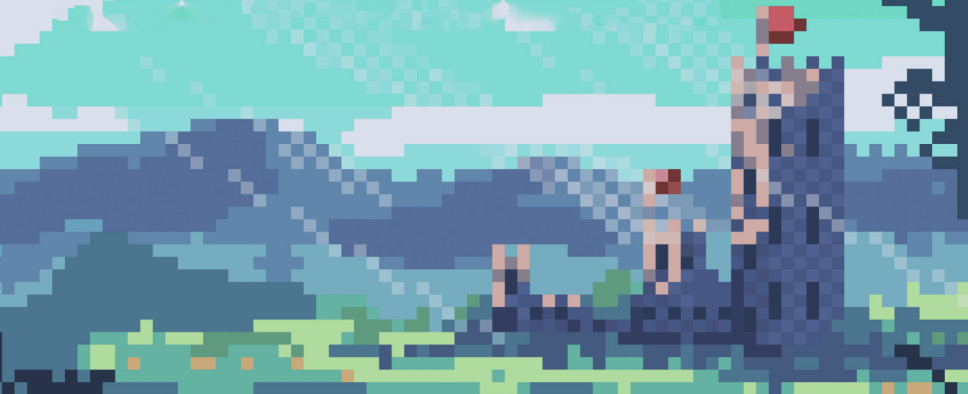Legends of Amberland: The Forgotten Crown Review - Page 3
-
Category: ReviewsHits: 23329

Article Index
The game's combat is turn-based. Unlike in those classic Might and Magic games, here you can't start a fight by firing some arrows or spells at your foes. Instead, you have to walk into an enemy and that starts an encounter.
The game has an interesting approach to initiative, where your foes generally get two attacks per turn that happen at different times, while your heroes' turn order is determined by their position in the formation. Your three middle characters are considered your front line and will be getting attacked most often, while the outer four will usually only have to deal with AoE damage.
Despite being turn-based, the game's combat system is lightning-fast. Your front-liners are your main damage dealers here, with your spellcasters performing a more supporting role - healing and buffing your party. The game does have some offensive spells, but during the early game these tend to cost too much mana, and by the time you get to the late game, most enemies have resistances and immunities, severely limiting the effectiveness of your offensive magic.
Apart from spells and magic, your characters have special combat skills determined by their class. So, for example, your Knights will be able to attack all enemies in front of them, while your Bards will restore a bit of health and mana for your party. These range from borderline useless to somewhat weak, especially considering you can only use them once before resting.
In fact, the main challenge in Legends of Amberland comes not from individual encounters, but instead from your ability to manage your party's health and mana pools (provided you're someone who doesn't consider resting after every fight and then teleporting back to town to restock your provisions a fun and viable strategy), and equipping your heroes with the right gear for the job.
The game's itemization is one of its best aspects, mainly due to the way it handles encumbrance. A characters' class is the main thing that determines how much gear they can equip, with their race, attributes and certain items further increasing their carrying capacity. And it's all balanced in such a way that you usually can't equip enough gear to cover all your bases that include physical armor, elemental resistances, and status effect immunities. As a result, making sure you're prepared for the challenges ahead becomes a neat challenge.
Another interesting idea here is the way armor works. On the most basic level, it merely blocks a certain amount of damage from every attack directed at your characters. But, its value actually scales with your characters' levels, and so, the same piece of armor works better for a high-level character than it does for a novice.
And just in general, the game has plenty of these neat little ideas that make the whole thing quite fun even despite its overly simplistic approach to the actual dungeon crawling.
Technical Information
Now, I don't know if it's just me, but every screenshot of the game makes it look like it's being rendered at a wrong aspect ratio or something, with both monsters and terrain looking kind of squished, for lack of a better word.
To my great surprise, actually playing the game dispels this illusion and the whole thing looks quite neat and cheerful in an old-school pixelated kind of way.
The game's audio effects are a bit limited but get the job done, and the same can be said about its music - it sounds nice, but the game could've used a bit more of it.
The UI and controls can take a bit of getting used to, but they work just fine. By the looks of it, you can play the game by using either just your mouse or your keyboard, but as is usually the case with games like these, a combination of both works best.
The game uses a proprietary engine that I can't really fault in in any way. I've not encountered any crashes or bugs during my playthrough, and the game saves and loads lightning-fast without using too much resources.
Conclusion
While its dungeon design and certain oversimplifications preclude Legends of Amberland: The Forgotten Crown from reaching the same heights as the games it's clearly inspired by, some of its unique and fresh ideas make it more than worthy of a playthrough.
And if the game's developer can build upon these ideas for the sequel, then that one may very well turn out great.

